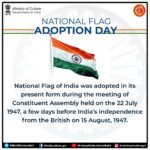Union Minister of Steel & Mines Narendra Singh Tomar Releases Report on 100 Mineral Exploration Blocks and Launches Uncover Project

The Union Minister of Steel & Mines Shri Narendra Singh Tomar released Report on Identification of 100 Mineral Exploration Blocks and launched Uncover project of the Geological Survey of India in New Delhi .
The Ministry of Mines has finalized a draft National Mineral Exploration Policy [NMEP] which has outlined a slew of measures for accelerating mineral exploration in the country. One of the important features in NMEP is attractive provisions for private investment in the exploration sector;
proposes that private entities would be engaged to carry out regional and detailed exploration work with the right to a certain share in the revenue (by way of royalty/ premium to be accruing to state government) from mining operation from the successful bidder after e-auction of mineral block discovered by that private explorer. The revenue sharing could be either in the form of a lump sum or an annuity, to be paid throughout the period of mining lease period, with transferable rights. Selection of private explorer is proposed to be done through a transparent process of competitive bidding through e-auction. For this, reasonable areas/ blocks for regional exploration will be earmarked/ identified by the Government for auctioning.
The Minister of Mines and Steel Shri Narendra Singh Tomar also launched the Uncover project of GSI. This state-of-the-art project to be implemented in two selected areas in the country is focused on probing for deep seated/ concealed mineral deposits. This programme is also one of the important action points of the draft NMEP. Characterizing India’s geological cover, investigating lithospheric architecture, resolving 4D geodynamic and metallogenic evolution, and detecting and characterizing the distal footprints of ore deposits, would be the main components of this initiative.It will help to discover new, world-class ore deposits buried deep under this cover opening up new exploration frontiers and improving mineral exploration.
CONTEXT
India‟s mineral sector can best be characterized as one of immense potential that is waiting to be tapped. India has exploited most of its outcrop and near surface mineral deposits. It has become imperative to focus on identification of deep-seated (below 300m to 1000m in the initial phase) and concealed mineral targets.
Such an exercise requires thorough understanding of the geological and geochemical framework, knowledge of occurrence of ore-forming mineral systems and the extent of thickness of non-mineralized cover rocks over the concealed mineral producing belts. Geophysical studies always play a vital role in exploration of buried ore deposits. Deep exploration is a cost-intensive exercise with high degree of risk factor. It is therefore, essential to adopt an integrated approach for selecting suitable geological tracts before undertaking multidisciplinary geoscientific surveys and subsequent deep drilling projects. If country is to look for sizable new resources for sustained growth of its mineral-based industry, the country has to embark on a systematic programme of capacity building in mineral targeting. Foreign Direct Investment (FDI) in the mining sector had also been progressively liberalized over the period. (From 2006, 100% FDI in the mining sector has been permitted through the automatic route).
With Make in India approach adapted by the Government, the demand of mineral commodities is likely to increase much above the growth rate of present level of mineral consumption, be it by the infrastructure industries or the requirements of Defense sector. At present barring tungsten, the consumption level of strategic minerals required by the defense sector of India appears miniscule largely due to import of finished military hardware. Deficiency of gold and diamond resources causes major strain on the India‟s import bill.
CROSS REFRANCE
Distal Footprint: All aspects of the signature of the presence of a mineral deposit that extend beyond the obvious occurrence of mineralisation. As well as any concentric alteration zonation around a deposit, it includes spent fluid discharge volumes and largescale fluid delivery systems.
Lithosphere: The rigid outer layer of the earth. It comprises a relatively thin upper layer with a felsic to intermediate composition (the Crust) and a much thicker lower layer of depleted upper mantle.
Geological Survey of India (GSI), established in 1851, has been the most important institution that has performed the task of mineral exploration. GSI is entrusted with the lead role in the task of carrying out geological mapping and acquiring geophysical and geochemical data for the entire country. It generates and disseminates baseline data to other exploration agencies for accelerating the mineral exploration process. There have been also some notable contributions by the Departments of Geology of several State Governments
Metallogeny: The branch of geology concerned with the study of the formation of mineral deposits.
GEOLOGY: The science that studies the structure of the earth.






0 Comments